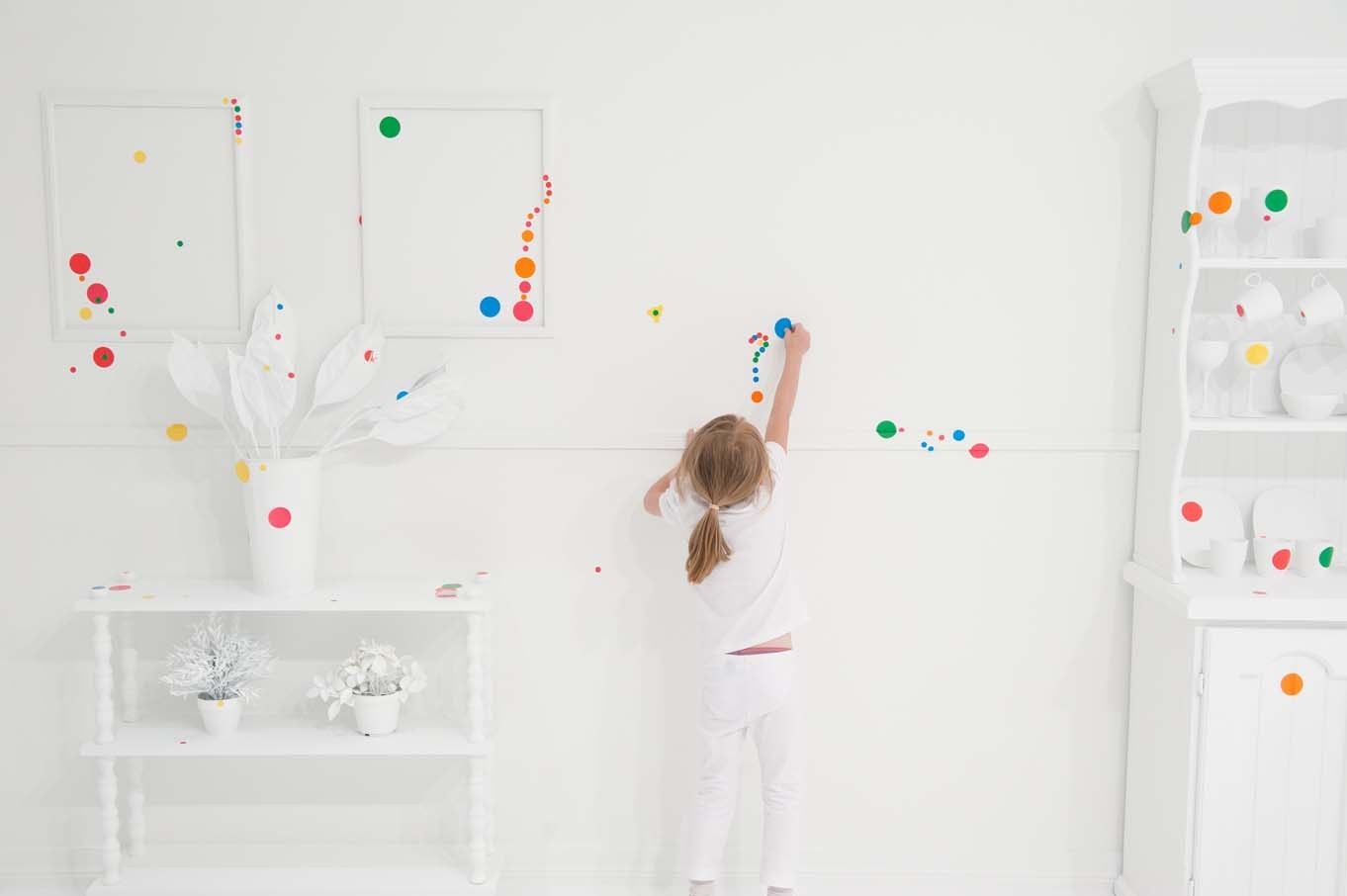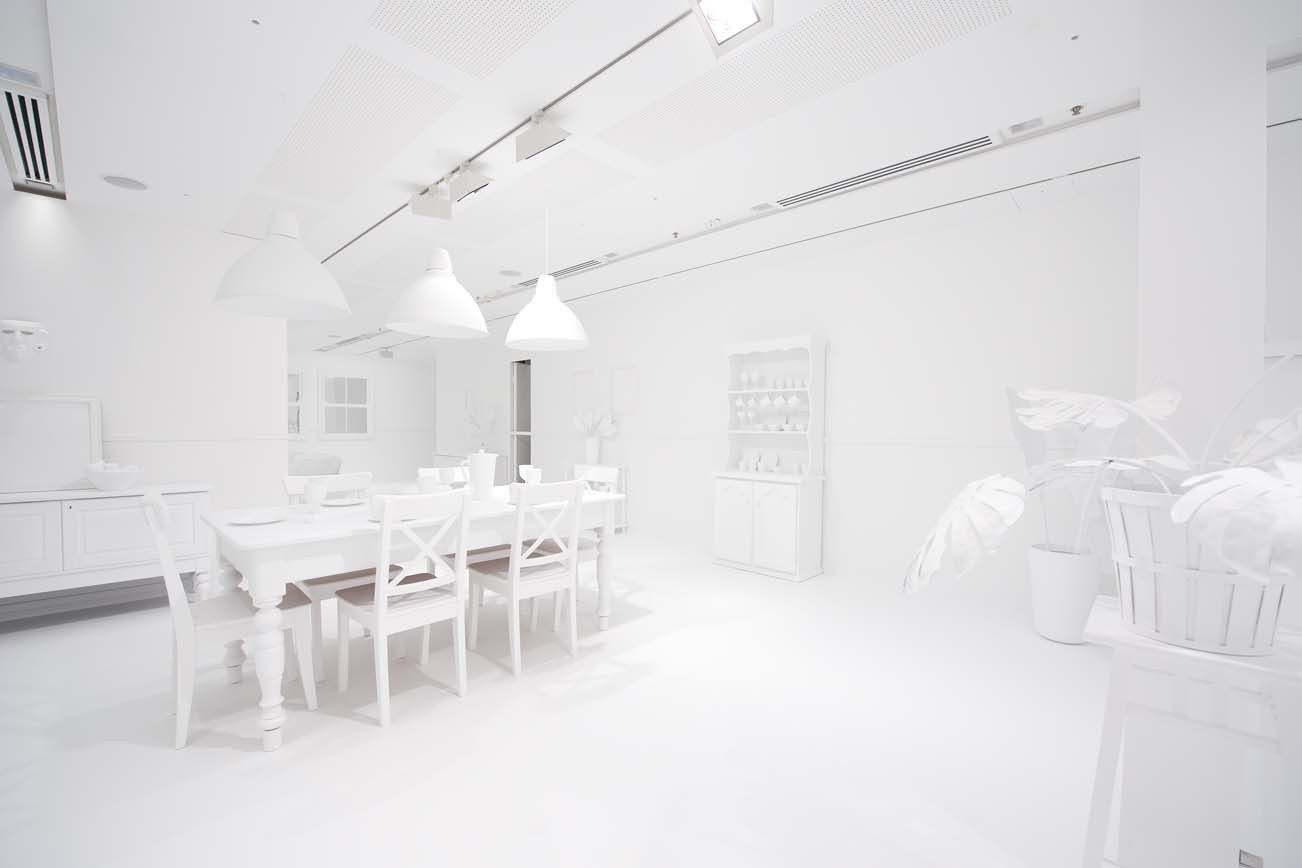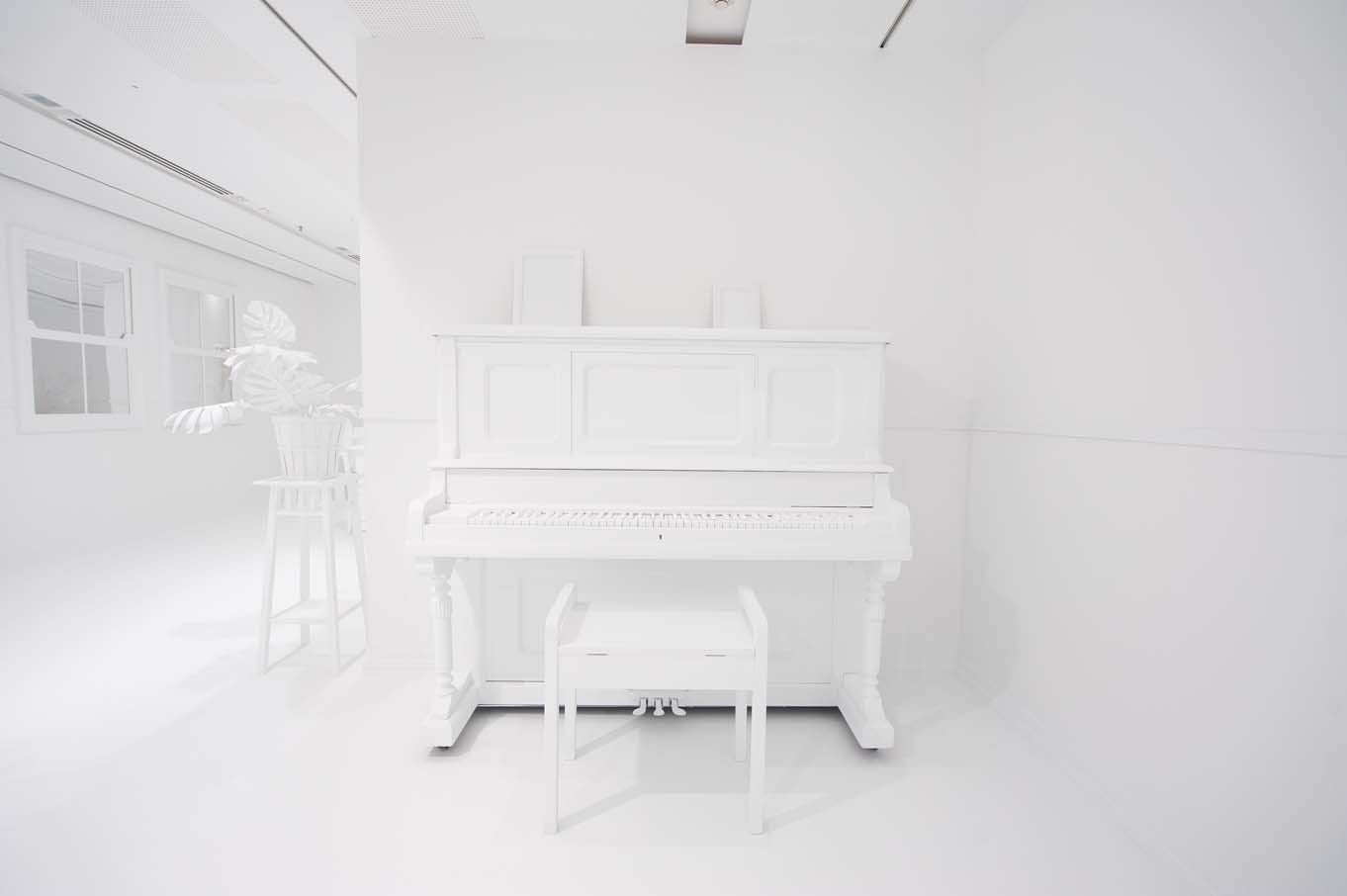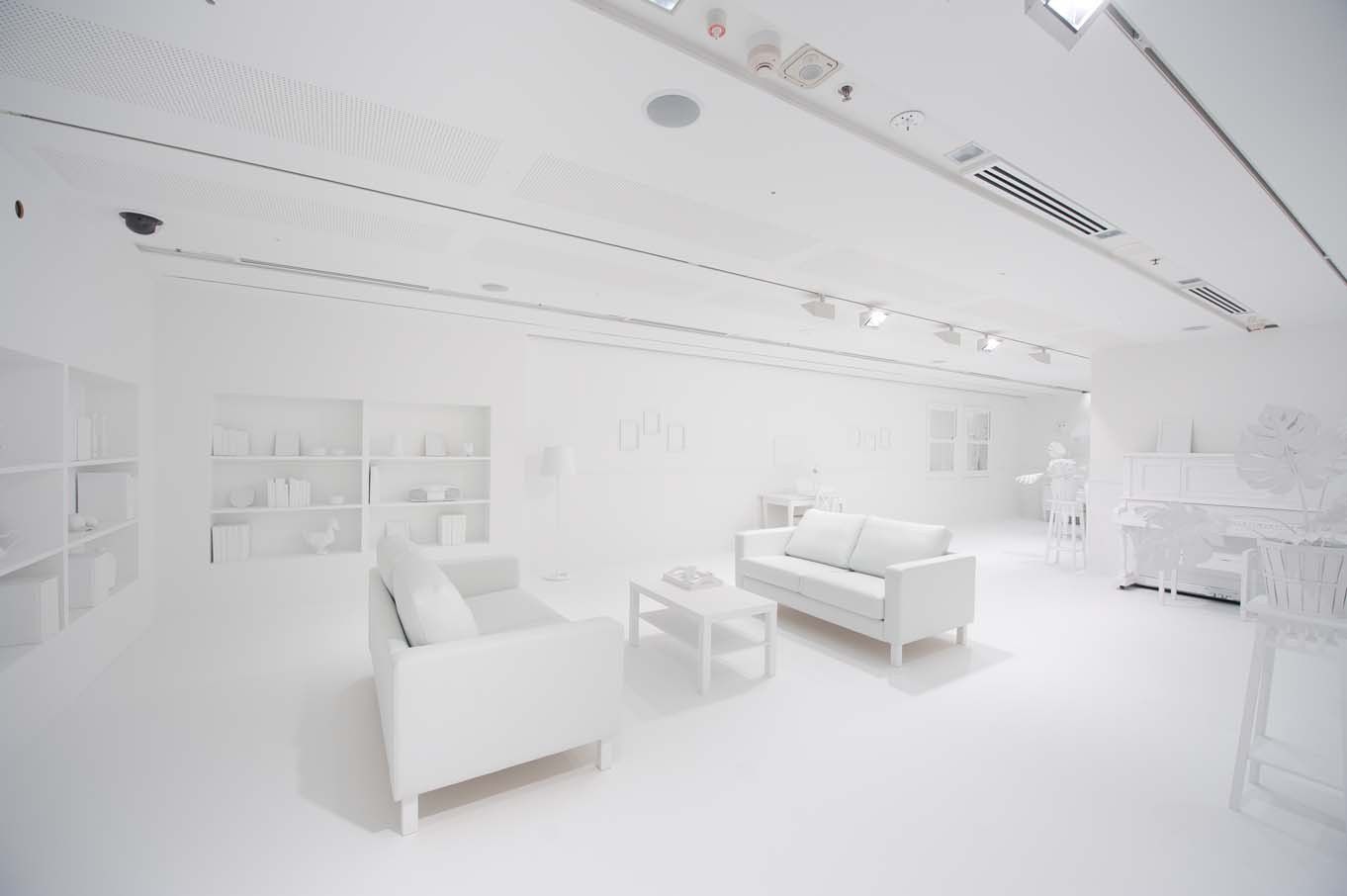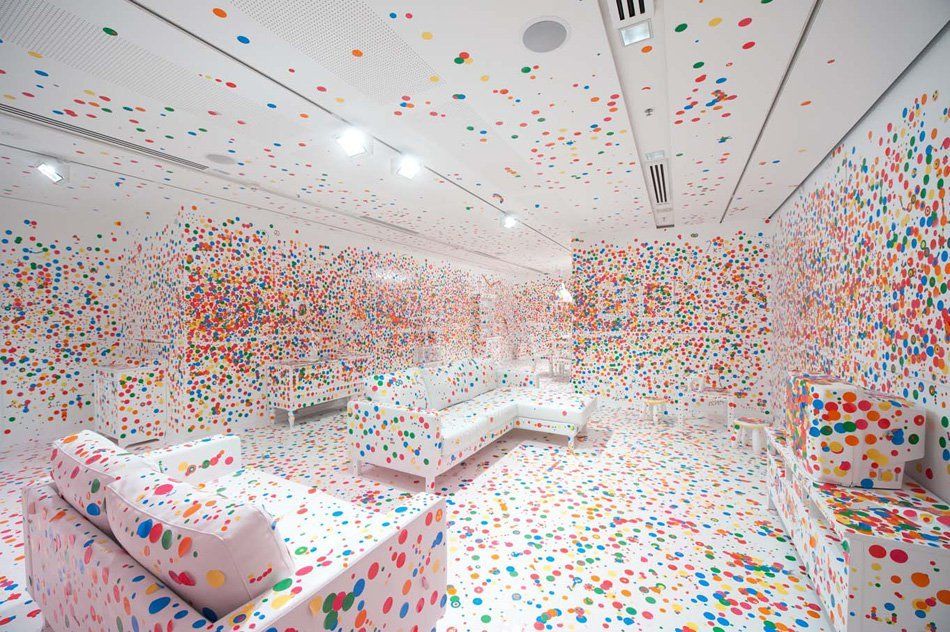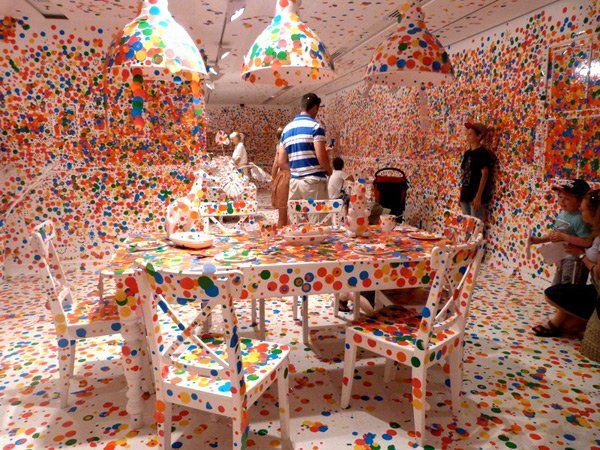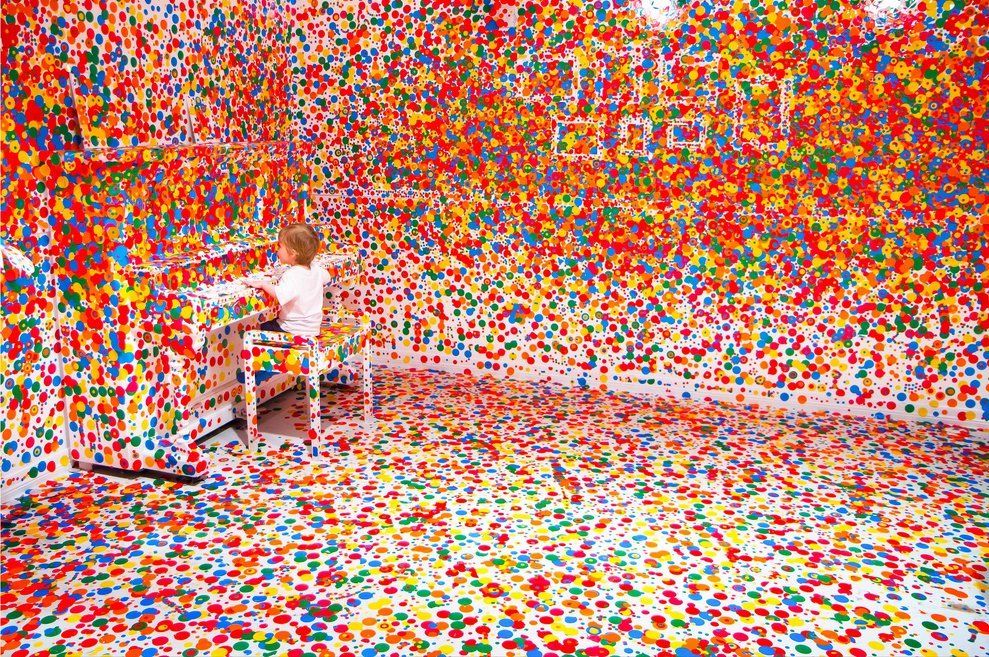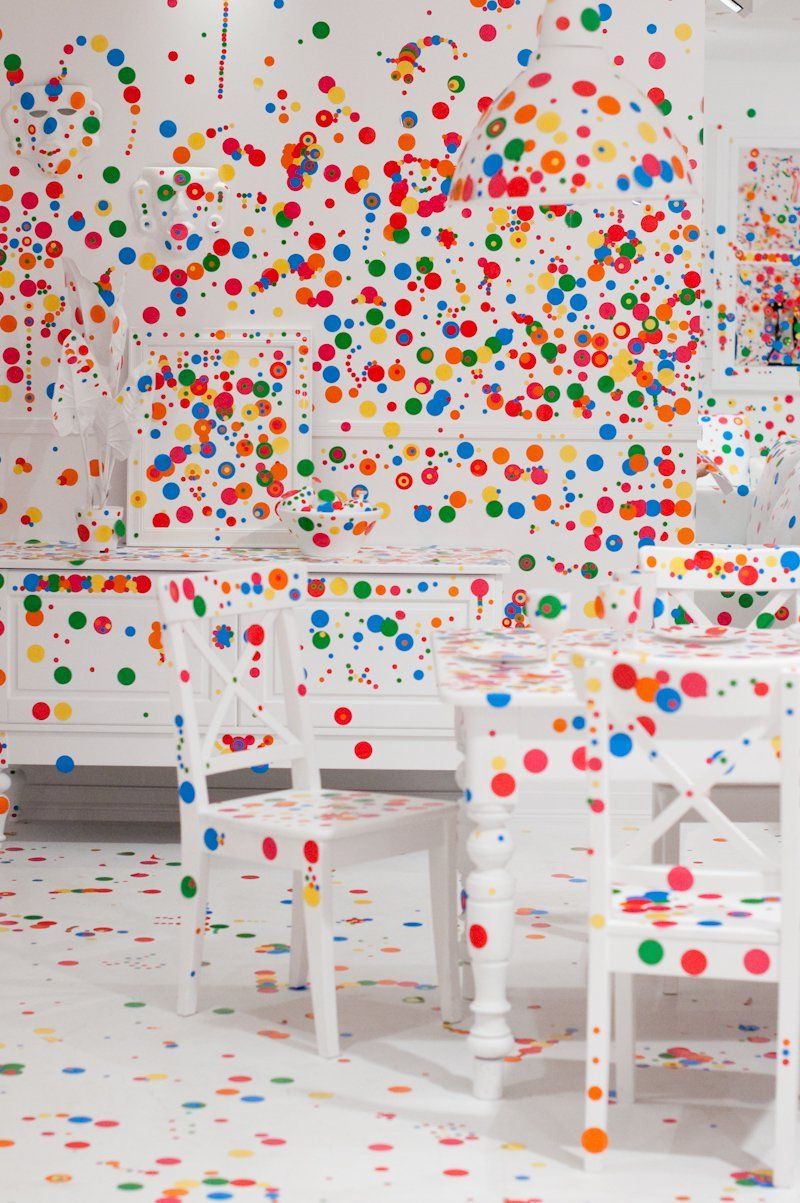The Obliteration Room
New York’s David Zwirner art gallery was recently host to the ‘Give Me Love’ installation – a collection by Japanese artist Yayoi Kusama. A particular piece was “The Obliteration Room” (2002 – present) that has more than what its looks convey. Looking like a typical American house in the exterior, with generic furniture and fittings in the interior, it captures the visitor with a vivid comostion: all is white, waiting to be covered in colorful dot stickers. What’s more is that visitors can contribute to the piece, in a participatory process.
‘The Obliteration Room’ was fist displayed at the Queensland Art Gallery in 2002, as an art project for children, and in 2012, it was presented at Tate Modern. The white room works as a canvas for visitors – its furniture and details blend in together as colorful dots take over. It is a fun project, but one that is based on the artist’s troubled childhood, that has more in that one can imagine.
Looking back at her biography and past works could offer a deeper understanding of her obsessive art. Yayoi Kusama (born in 1929 in Matsumoto, Nagano, Japan) is one of the most influential art figures of the past century, inspiring personalities such as Andy Warhol or Yoko Ono, among other artists, fashion designers, filmmakers or architects. Her work, deeply rooted in the artist’s own fears and troubled past, is edgy and obsessive, with dots as a reoccurring motif. Following an abusive childhood, she studied the Japanese art of Nihonga painting in Kyoto before moving to New York in 1957. Here she experimented with different movements, from pop art to the hippie counterculture. In 1973 she moved back to Japan and in 1977 she voluntarily admitted herself to a hospital where she has spent the rest of her life.
On one her notable earlier experiences that had an impact on her works, she writes: ‘One day I was looking at the red flower patterns of the tablecloth on a table, and when I looked up I saw the same pattern covering the ceiling… I felt as if I had begun to self-obliterate… I ran desperately up the stairs. The steps below me began to fall apart and I fell down the stairs straining my ankle’. The polka-dot pattern soon becomes her trademark, having different connotations – she explains: ‘polka-dot has the form of the sun, which is a symbol of the energy of the whole world and our living life. Round, soft, colorful, senseless and unknowing. Polka-dots become movement… Polka dots are a way to infinity.’
It is remarkable how Kusama overcame her dark past and used it to create such positive, colorful art works. She admits that “if it were not for art, [she] would have killed [herself] a long time ago“. This comes as a powerful example of art as therapy – and in Kusama’s case, it was a ‘therapy’ that inspired others, as well.
By: Ana Cosma
Edited by: Zeynab Matar
